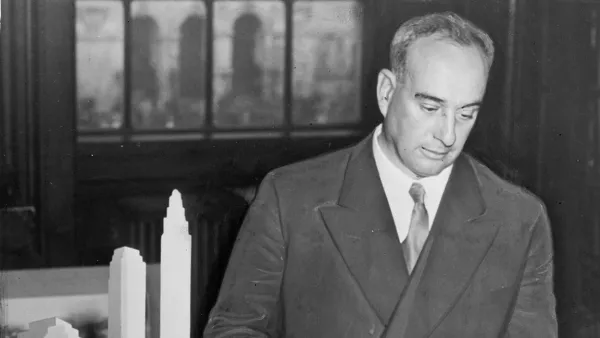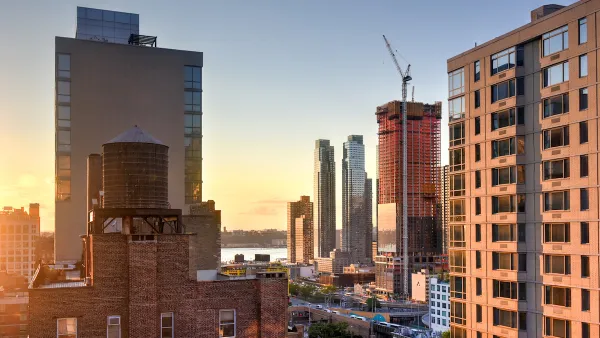The long-delayed and troubled design for Manhattan's Ground Zero site has undergone some improvements and been revealed in a new model. But as New York Times architecture critic Nicolai Oroussoff notes, the design is still lacking.
"During the next several years the project's cost spiraled to $3.2 billion from $2 billion. The scheduled completion date was delayed, first by a couple of years, then several more. Mr. Calatrava, determined to save his design, worked slavishly to get the budget under control. In a misguided effort to avoid more controversy, the Port Authority of New York and New Jersey enveloped the project in secrecy, essentially shutting the public out of the design process.
But even for those of us who had given up on the idea that anything good would ever emerge from ground zero, the unveiling of an elaborate new model of the revised design on Saturday at the Queen Sofía Spanish Institute was heart wrenching.
The model gives us the clearest picture yet of Mr. Calatrava's vision. Dozens of minor improvements have been made; his structural pyrotechnics look as dazzling as ever.
Even so, Mr. Calatrava remains unable to overcome the project's fatal flaw: the striking incongruity between the extravagance of the architecture and the limited purpose it serves."
FULL STORY: Post-9/11 Realities Warp a Soaring Design

National Parks Layoffs Will Cause Communities to Lose Billions
Thousands of essential park workers were laid off this week, just before the busy spring break season.

Retro-silient?: America’s First “Eco-burb,” The Woodlands Turns 50
A master-planned community north of Houston offers lessons on green infrastructure and resilient design, but falls short of its founder’s lofty affordability and walkability goals.

Delivering for America Plan Will Downgrade Mail Service in at Least 49.5 Percent of Zip Codes
Republican and Democrat lawmakers criticize the plan for its disproportionate negative impact on rural communities.

Test News Post 1
This is a summary

Test News Headline 46
Test for the image on the front page.

Balancing Bombs and Butterflies: How the National Guard Protects a Rare Species
The National Guard at Fort Indiantown Gap uses GIS technology and land management strategies to balance military training with conservation efforts, ensuring the survival of the rare eastern regal fritillary butterfly.
Urban Design for Planners 1: Software Tools
This six-course series explores essential urban design concepts using open source software and equips planners with the tools they need to participate fully in the urban design process.
Planning for Universal Design
Learn the tools for implementing Universal Design in planning regulations.
EMC Planning Group, Inc.
Planetizen
Planetizen
Mpact (formerly Rail~Volution)
Great Falls Development Authority, Inc.
HUDs Office of Policy Development and Research
NYU Wagner Graduate School of Public Service





























